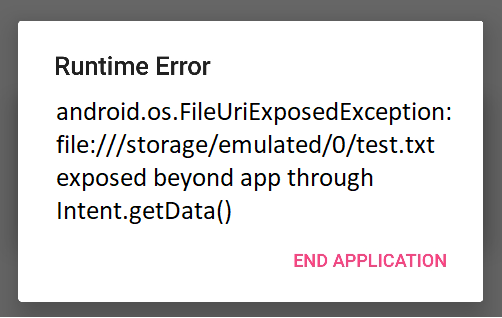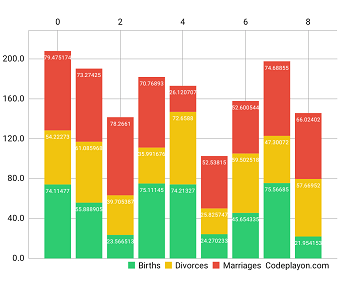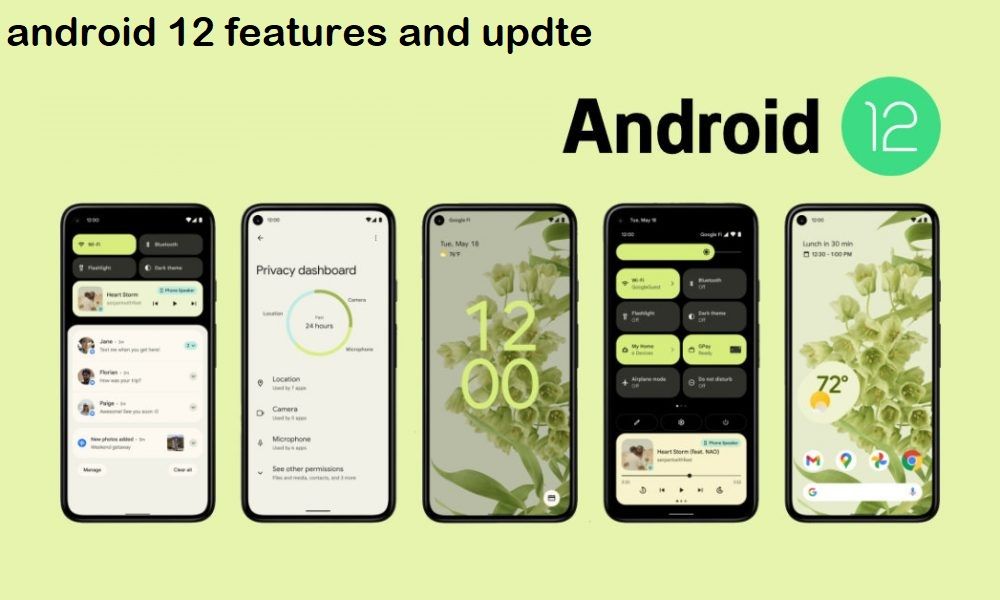Android CameraX Java Example and Camera2 API
In the realm of Android CameraX Java Example, I’ve experienced Camera/Camera2 API as one of the more complicated methods to work in our favor. It was initially Camera API, then pulled after Camera2 API was introduced. There isn’t much more challenging to work with the identical.
We are finally able to say that Android Jetpack brought us CameraX API through which the implementation and use of Android Camera can be done in a matter of minutes and with very few codes. CameraX was developed on camera2 and is built on top of Camera2 API. We will provide an overview of the application of CameraX API using Java.
Android CameraX API
Table of Contents
The development of an app that makes use of Camera features such as Instagram as well as Snapchat on Android is a challenge for Android developers, partly because of the numerous makers of these devices as well as the vast array of equipment makers.
If you are not interested in controlling the camera but you simply want to take an image, the most straightforward step is to launch the camera intent in order to capture a picture. However, if you want complete control over the camera you should consider CameraX is the ideal library for Android development. CameraX will take away from the burden of working with different camera manufacturers that are available for numerous Android devices, and focuses on creating the Camera application.
Android CameraX Java Example Souce Code
Step 1: Create an Android project and select the language java and sync your project.
Step 2: Add Gradle Build Dependency.
dependencies {
implementation 'androidx.appcompat:appcompat:1.5.1'
implementation 'com.google.android.material:material:1.7.0'
implementation 'androidx.constraintlayout:constraintlayout:2.1.4'
testImplementation 'junit:junit:4.13.2'
androidTestImplementation 'androidx.test.ext:junit:1.1.5'
androidTestImplementation 'androidx.test.espresso:espresso-core:3.5.1'
def cameraxVersion = "1.1.0-alpha05"
implementation "androidx.camera:camera-core:${cameraxVersion}"
implementation "androidx.camera:camera-camera2:${cameraxVersion}"
implementation "androidx.camera:camera-lifecycle:${cameraxVersion}"
// CameraX View class
implementation 'androidx.camera:camera-view:1.0.0-alpha25'
}
Step 3: Add Permissions Manifest file.
<uses-permission android:name="android.permission.CAMERA"/> <uses-permission android:name="android.permission.RECORD_AUDIO"/> <uses-permission android:name="android.permission.WRITE_EXTERNAL_STORAGE" android:maxSdkVersion="28"/> <uses-permission android:name="android.permission.READ_EXTERNAL_STORAGE"/>
Step 4: Create UI using the below layout code activity_main.xml
<?xml version="1.0" encoding="utf-8"?>
<androidx.constraintlayout.widget.ConstraintLayout xmlns:android="http://schemas.android.com/apk/res/android"
xmlns:app="http://schemas.android.com/apk/res-auto"
xmlns:tools="http://schemas.android.com/tools"
android:layout_width="match_parent"
android:layout_height="match_parent"
tools:context=".MainActivity">
<LinearLayout
android:id="@+id/linearLayout"
android:layout_width="0dp"
android:layout_height="0dp"
android:orientation="vertical"
android:layout_marginBottom="8dp"
android:importantForAccessibility="no"
app:layout_constraintBottom_toTopOf="@+id/button"
app:layout_constraintEnd_toEndOf="parent"
app:layout_constraintStart_toStartOf="parent"
app:layout_constraintTop_toTopOf="parent">
<view
android:id="@+id/previewView"
class="androidx.camera.view.PreviewView"
android:layout_width="match_parent"
android:layout_height="match_parent" />
</LinearLayout>
<LinearLayout
android:id="@+id/button"
android:layout_width="match_parent"
android:layout_height="100dp"
android:orientation="horizontal"
android:weightSum="3"
android:gravity="center"
app:layout_constraintBottom_toBottomOf="parent"
app:layout_constraintEnd_toEndOf="parent"
app:layout_constraintStart_toStartOf="parent"
app:layout_constraintTop_toBottomOf="@+id/linearLayout"
>
<Button
android:id="@+id/bCapture"
android:layout_width="wrap_content"
android:layout_height="wrap_content"
android:layout_marginRight="50dp"
android:text="Capture"
/>
<Button
android:id="@+id/bRecord"
android:layout_width="wrap_content"
android:layout_height="wrap_content"
android:layout_marginLeft="50dp"
android:text="Record" />
</LinearLayout>
</androidx.constraintlayout.widget.ConstraintLayout>
Step 5: Main Activity Java file code.
package com.codeplayon.androidcamerax;
import androidx.annotation.NonNull;
import androidx.annotation.Nullable;
import androidx.appcompat.app.AppCompatActivity;
import androidx.camera.core.Camera;
import androidx.camera.core.CameraSelector;
import androidx.camera.core.ImageAnalysis;
import androidx.camera.core.ImageCapture;
import androidx.camera.core.ImageCaptureException;
import androidx.camera.core.Preview;
import androidx.camera.core.VideoCapture;
import androidx.camera.lifecycle.ProcessCameraProvider;
import androidx.camera.view.PreviewView;
import androidx.core.app.ActivityCompat;
import androidx.core.content.ContextCompat;
import androidx.lifecycle.LifecycleOwner;
import android.Manifest;
import android.annotation.SuppressLint;
import android.content.ContentValues;
import android.content.pm.PackageManager;
import android.os.Bundle;
import android.os.Environment;
import android.os.Handler;
import android.provider.MediaStore;
import android.view.View;
import android.widget.Button;
import android.widget.ImageView;
import android.widget.Toast;
import com.google.common.util.concurrent.ListenableFuture;
import java.io.File;
import java.text.SimpleDateFormat;
import java.util.Date;
import java.util.Locale;
import java.util.concurrent.ExecutionException;
import java.util.concurrent.Executor;
import java.util.concurrent.Executors;
public class MainActivity extends AppCompatActivity implements View.OnClickListener {
private ListenableFuture<ProcessCameraProvider> cameraProviderFuture;
PreviewView previewView;
Button bTakePicture, bRecording;
private ImageCapture imageCapture;
private VideoCapture videoCapture;
@Override
protected void onCreate(Bundle savedInstanceState) {
super.onCreate(savedInstanceState);
setContentView(R.layout.activity_main);
bTakePicture = findViewById(R.id.bCapture);
bRecording = findViewById(R.id.bRecord);
previewView = findViewById(R.id.previewView);
bTakePicture.setOnClickListener(this);
bRecording.setOnClickListener(this);
cameraProviderFuture = ProcessCameraProvider.getInstance(this);
cameraProviderFuture.addListener(() -> {
try {
ProcessCameraProvider cameraProvider = cameraProviderFuture.get();
startCameraX(cameraProvider);
} catch (ExecutionException e) {
e.printStackTrace();
} catch (InterruptedException e) {
e.printStackTrace();
}
}, getExecutor());
}
private Executor getExecutor() {
return ContextCompat.getMainExecutor(this);
}
@SuppressLint("RestrictedApi")
private void startCameraX(ProcessCameraProvider cameraProvider) {
cameraProvider.unbindAll();
CameraSelector cameraSelector = new CameraSelector.Builder()
.requireLensFacing(CameraSelector.LENS_FACING_BACK)
.build();
Preview preview = new Preview.Builder().build();
preview.setSurfaceProvider(previewView.getSurfaceProvider());
imageCapture = new ImageCapture.Builder()
.setCaptureMode(ImageCapture.CAPTURE_MODE_MINIMIZE_LATENCY)
.build();
videoCapture = new VideoCapture.Builder()
.setVideoFrameRate(30)
.build();
cameraProvider.bindToLifecycle(this, cameraSelector, preview, imageCapture, videoCapture);
}
@SuppressLint("RestrictedApi")
@Override
public void onClick(View view) {
switch (view.getId()) {
case R.id.bRecord: {
if (bRecording.getText() == "RECORD") {
bRecording.setText("STOP");
recordVideo();
} else {
bRecording.setText("RECORD");
videoCapture.stopRecording();
}
break;
}
case R.id.bCapture: {
capturePhoto();
break;
}
}
}
@SuppressLint("RestrictedApi")
private void recordVideo() {
if (videoCapture != null) {
long timeStamp = System.currentTimeMillis();
ContentValues contentValues = new ContentValues();
contentValues.put(MediaStore.MediaColumns.DISPLAY_NAME, timeStamp);
contentValues.put(MediaStore.MediaColumns.MIME_TYPE, "video/mp4");
if (ActivityCompat.checkSelfPermission(this, Manifest.permission.RECORD_AUDIO) != PackageManager.PERMISSION_GRANTED) {
// TODO: Consider calling
// ActivityCompat#requestPermissions
// here to request the missing permissions, and then overriding
// public void onRequestPermissionsResult(int requestCode, String[] permissions,
// int[] grantResults)
// to handle the case where the user grants the permission. See the documentation
// for ActivityCompat#requestPermissions for more details.
return;
}
videoCapture.startRecording(
new VideoCapture.OutputFileOptions.Builder(
getContentResolver(),
MediaStore.Video.Media.EXTERNAL_CONTENT_URI,
contentValues
).build(),
getExecutor(),
new VideoCapture.OnVideoSavedCallback() {
@Override
public void onVideoSaved(@NonNull VideoCapture.OutputFileResults outputFileResults) {
Toast.makeText(MainActivity.this,"Saving...",Toast.LENGTH_SHORT).show();
}
@Override
public void onError(int videoCaptureError, @NonNull String message, @Nullable Throwable cause) {
Toast.makeText(MainActivity.this,"Error: "+ message ,Toast.LENGTH_SHORT).show();
}
}
);
}
}
private void capturePhoto() {
long timeStamp = System.currentTimeMillis();
ContentValues contentValues = new ContentValues();
contentValues.put(MediaStore.MediaColumns.DISPLAY_NAME, timeStamp);
contentValues.put(MediaStore.MediaColumns.MIME_TYPE, "image/jpeg");
imageCapture.takePicture(
new ImageCapture.OutputFileOptions.Builder(
getContentResolver(),
MediaStore.Images.Media.EXTERNAL_CONTENT_URI,
contentValues
).build(),
getExecutor(),
new ImageCapture.OnImageSavedCallback() {
@Override
public void onImageSaved(@NonNull ImageCapture.OutputFileResults outputFileResults) {
Toast.makeText(MainActivity.this,"Saving...",Toast.LENGTH_SHORT).show();
}
@Override
public void onError(@NonNull ImageCaptureException exception) {
Toast.makeText(MainActivity.this,"Error: "+exception.getMessage(),Toast.LENGTH_SHORT).show();
}
});
}
}
Read More:-



